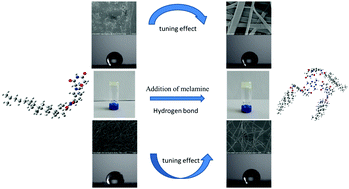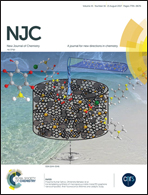Melamine tunable effect in a lenalidomide-based supramolecular self-assembly system via hydrogen bonding
Abstract
In this study, a new gelator containing lenalidomide and cholesterol groups was synthesized, which could form stable gels in 1,4-dioxane and mixed solvents of DMF/H2O (v/v, 1/1). The self-assembly process was studied and certified by field emission scanning electron microscopy, UV-vis, IR, XRD, and CA. Based on the results obtained from the abovementioned analyses, the self-assembly structure, aggregation pattern, and surface wettability could be tuned via the addition of melamine due to intermolecular hydrogen bonding between compound 1 and melamine (MA). The irregular lumpy and the closely packed fiber structures could be turned into microbelt and sparse fiber structures after the addition of MA, respectively. Moreover, the hydrophobicity of the xerogel film of 1-MA was obviously increased. The mechanical strength of gel 1-MA was obvisously enhanced due to the addition of MA. The UV-vis, IR, and XRD experiment results showed that the self-assembly process and mode of 1 was changed due to the addition of MA through intermolecular hydrogen bonding between 1 and MA. Therefore, these results provide a method for the regulation of the self-assembly process via intermolecular noncovalent interaction.



 Please wait while we load your content...
Please wait while we load your content...